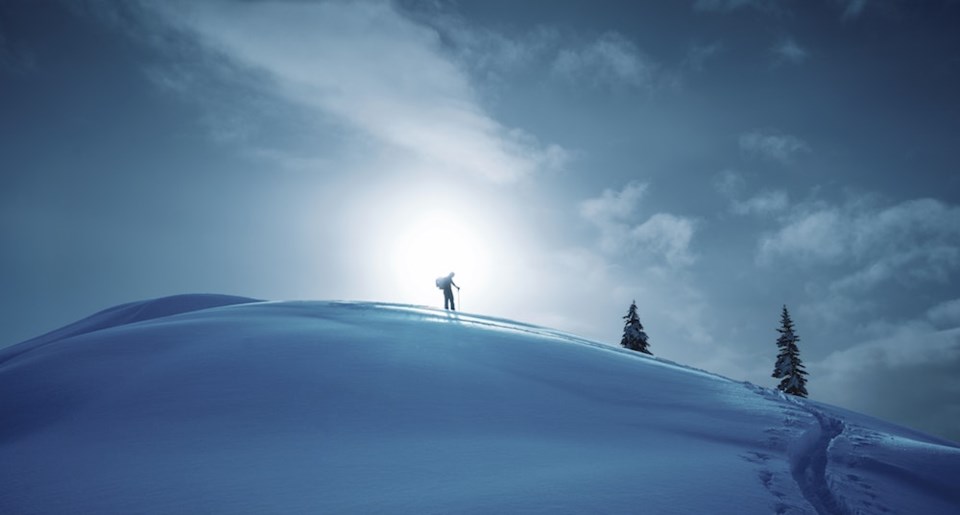Avalanche Canada is warning backcountry adventurers to be on alert this weekend, after a persistent weak layer blanketed by recent storm snow was to blame for several large slides in the Sea to Sky area on Wednesday, March 2.
According to the organization's most up-to-date avalanche summary, that included an up-to-size-3 natural avalanche cycle, as well as a size 2.5 slide triggered remotely by a skier from about 40 metres away. That slide occurred on an east aspect at around 1700 metres elevation. Another size 2 storm slab avalanche, similarly triggered by a skier, was also reported in Whistler. (The slides did not appear to cause any injuries.)
The problem, notes Avalanche Canada, is a sun crust/surface hoar interface that formed in mid-February and is now located about 50 centimetres into the snow with wide propagation. On Thursday, the Sea to Sky corridor's danger rating was listed at "considerable" for alpine and treeline terrain, and moderate below treeline. That danger rating is predicted to shift slightly on Friday, with risk rated as "considerable" for alpine terrain only, and "moderate" for terrain at and below the treeline.
Check out Avalanche Canada forecasters' weekend bulletin for the Sea to Sky, below:
In like a lion for March!
The February high pressure weather system finally broke down, allowing a juicy Pacific frontal system to invade the Coast Mountains. The Sea to Sky region received nearly 50 cm of new storm snow that was accompanied by strong southeast–to-west winds. This formed new and reactive direct action storm slabs and wind slabs at upper elevations. Loose wet avalanche activity also occurred at lower elevations due to rain and warming. Additionally, the storm was the perfect recipe to build upon and increase the size of existing cornices along ridgelines.
The forecast shows a clearing, cooling, and drying trend heading into the weekend. Natural avalanche activity is expected to taper off as the recent storm snow settles out and starts to stabilize. However, human triggered avalanches will remain likely, especially on certain aspects and elevations. A persistent weak layer beneath the recent storm snow has been catching people by surprise at treeline elevations (1,600–1,800 m) on shaded aspects (north through east). This weak interface is comprised of facets on a crust. Remotely-triggered size 2 to 2.5 avalanches, which are big enough to bury a person, were reported on Wednesday. Unfortunately, this persistent weak layer is not expected to disappear and heal anytime soon. We need to be conservative and diligent while traveling through avalanche terrain.
With spring just around the corner the sun will affect the upper snowpack, weakening cornices and the recent storm snow, especially on sunny slopes and lower elevations. Knowing that the March weather can really pack a punch, time your day accordingly and practice safe travel habits that reflect the current avalanche hazard and conditions. Keep in mind that a persistent slab problem is tricky to forecast with lots of uncertainty.
- Pay attention to the aspect and elevation as solar radiation intensifies and melts and weakens the upper snowpack.
- Pay attention to wind direction and loading patterns, and look for signs of fresh wind slab like smooth and hard surface snow or whumping and cracking beneath your feet.
- Give cornices a wide berth from above and below. They are especially unpredictable when the sun is out and they can be a hazard on their own or act as a large trigger on the slope below.
Check the most recent avalanche forecast at avalanche.ca to get the most up-to-date information on conditions. This will help with your decision making process on which terrain to avoid, and which to shred.






